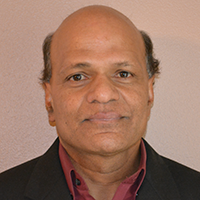Abstract and Biography (English)
High Speed Testing is moving from some independent modules to an integrated complex system. In order to make sure that the final system can meet testing requirement, we need to do complete correlation between simulation and verification of each segment, then we can do fully correlation between the simulation and verification of the whole system.
This presentation covered four topics, firstly, it introduced some typical 100G high-speed interface such as SFP+, QSFP+, miniSAS, zSFP+,
zQSFP+, CXP, CFP, CFP2, CFP4 coming along with the age of BIG DATA. Secondly, it covers the testing of a 100G high-speed interface based on IEEE802.3bm(CAUI-4)and
IEEE802.3bj. Thirdly, it describes how to design a workable 100G testing fixture, starting with material verification, stackup design, trace impedance tuning and insertion
loss correlation, then it summarized some methods to optimize vias and connector mating to get requested impedance control, insertion loss, cross talk, common to differential
mode conversion, etc. Fourthly, this presentation used keysight PXI Modular network analyzer to do the fixture verification based on PLTS, to
get the comparison result with IEEE802.3bj Spec.
Jackie Luo is founder and President of
Zenfocus Corporation who is subsidiary of Shenzhen Fastprint
Circuit Tech Co., Ltd., starting from August 2015, Prior to
founding Zenfocus, Jackie worked as Asia-Pacific Manager of
Pactron, in charge of overall business development, engineering
and supporting for three years.
Before doing ATE board business, Jackie worked as senior
application engineer in Verigy (now Advantest) for 5 years and
worked as staff test engineer in Spreadtrum for one year.
Jackie Luo received his B.A from Nanjing University, a Master
Degree of information and communication engineering from Zhejiang
university.
Abstract and Biography (Chinese)
伴随着测试技术的飞速发展,高速测试从一些相对独立的模块逐渐整合成为复杂的系统级测试。为了满足终端系统能够达到测试要求,我们需要逐段进行仿真和验证,从而最终能够满足整个系统的仿真与验证需求。
本篇论文包括四个主题:
首先,介绍一些伴随大数据时代而产生典型的100G高速信号,例如SFP+,QSFP+,miniSAS,zSFP+, zQSFP+, CXP, CFP, CFP2, CFP4等;
其次,它涵盖了基于IEEE802.3bm(CAUI-4)和IEEE802.3bj的100 g高速接口的测试;
再次,我们从选材,叠层,阻抗优化,插损等方面来描述如何审计一个可行性的100G高速信号的测试夹具,然后总结了一些优化过孔,连接器匹配等方法以满足阻抗控制,插损,串扰,和差模转换的需求;
最后,我们用基于PLTS的keysight PXI的网分仪量测的结果与IEEE802.3bj的Spec进行对比。
Jackie Luo
是上海泽丰半导体科技有限公司的创始人和总经理,上海泽丰半导体科技有限公司是2015年8
月成立的深圳市兴森快捷电路科技股份有限公司旗下的子公司。在此之前,他曾担任三年的Pactron亚太区的总经理,
负责Pactron在亚太地区的业务发展,和工程及技术支持。
在专注于ATE的测试板业务前,Jackie曾在惠瑞捷(现爱德万)任职高级应用工程师五年,后又在展讯通信任职测试工程师一年。
Jackie Luo在南京大学取得学士学位,后于浙江大学信息与通信工程取得硕士学位。


